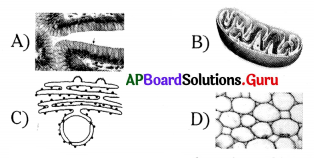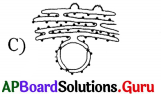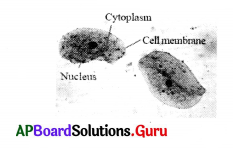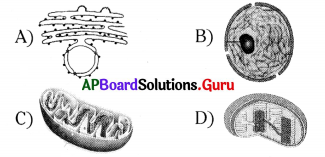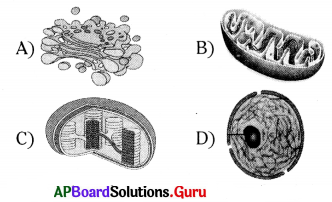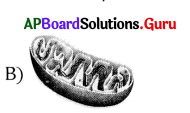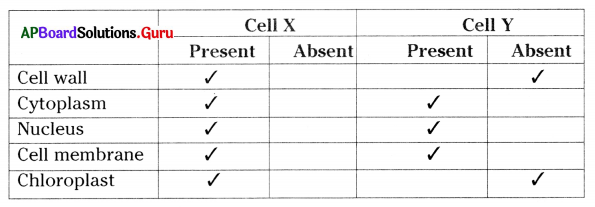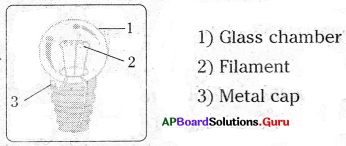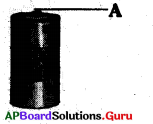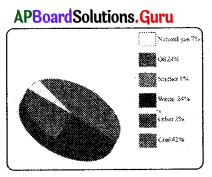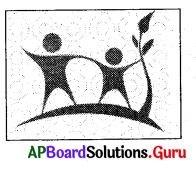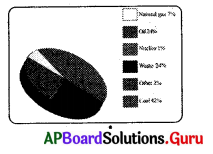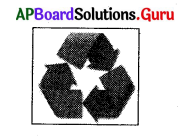Practice the AP 9th Class Biology Bits with Answers Chapter 3 Animal Tissues on a regular basis so that you can attempt exams with utmost confidence.
AP State Syllabus 9th Class Biology Bits 3rd Lesson Animal Tissues with Answers
I. Choose the correct answers :
Question 1.
Covering or protecting tissue inside or outside of animal body is
A) Epithelial tissue
B) Connective tissue
C) Muscular tissue
D) Nervous tissue
Answer:
A) Epithelial tissue
Question 2.
The tissue which makes connection between organs is called
A) Epithelial tissue
B) Connective tissue
C) Muscular tissue
D) Nervous tissue
Answer:
B) Connective tissue
![]()
Question 3.
The tissue which is responsible for movements in our body is
A) Epithelial tissue
B) Connective tissue
C) Muscular tissue
D) Nervous tissue
Answer:
C) Muscular tissue
Question 4.
The tissue that responds to internal and external stimuli is
A) Epithelial tissue
B) Connective tissue
C) Muscular tissue
D) Nervous tissue
Answer:
D) Nervous tissue
Question 5.
Multicellular gland is formed by
A) Connective tissue
B) Epithelial tissue
C) Areolar tissue
D) Adipose tissue
Answer:
B) Epithelial tissue
Question 6.
The scales of fishes, reptiles and feathers of birds grow from which cells ?
A) Epithelial cells
B) Connective tissue
C) Areolar cells
D) Fibroblasts
Answer:
A) Epithelial cells
Question 7.
Fibroblasts are cells present in
A) Cartilage
B) Bone
C) Areolar tissue
D) Ligament
Answer:
C) Areolar tissue
Question 8.
Bone is made up of
A) calcium phosphate
B) calcium carbonate
C) calcium phosphate & calcium carbonate
D) sodium carbonate
Answer:
C) calcium phosphate & calcium carbonate
Question 9.
Tissue found in the joints of bones, tip of ribs, tips of the nose, external ears and in trachea is
A) cartilage
B) bone
C) areolar tissue
D) ligament
Answer:
A) cartilage
![]()
Question 10.
The tissue that connects bones at the joints is
A) tendon
B) ligament
C) cartilage
D) adipose tissue
Answer:
B) ligament
Question 11.
Fibres of ligament is made up of a protein called
A) prothrombin
B) fibrinogen
C) heparine
D) collagen
Answer:
D) collagen
Question 12.
The colour of blood in cockroach
A) Red
B) White
C) Blue
D) Green
Answer:
B) White
Question 13.
Blue coloured blood is present in
A) Frog
B) Whale
C) Earthworm
D) Snail
Answer:
D) Snail
Question 14.
Amount of blood present in normal adult human beings
A) 5 litres
B) 4 litres
C) 3 litres
D) 6 litres
Answer:
A) 5 litres
Question 15.
The substance that prevents blood clotting in blood vessels is
A) prothrombin
B) fibrinogen
C) heparine
D) blood platelets
Answer:
C) heparine
Question 16.
Red blood cells are red in colour due to the presence of
A) haemoglobin
B) fibrinogen
C) prothrombin
D) plasma
Answer:
A) haemoglobin
![]()
Question 17.
The life span of red blood cell is
A) 130 days
B) 120 days
C) 12 – 13 days
D) 115 days
Answer:
B) 120 days
Question 18.
Scientist who discovered blood groups
A) Karl Landsteiner
B) Carl Ericke
C) Malpighi
D) Robert Anges
Answer:
A) Karl Landsteiner
Question 19.
Red blood cells are generated from
A) adipocytes
B) heparine
C) pancreas
D) bone marrow of long bone
Answer:
D) bone marrow of long bone
Question 20.
Red blood cell with nucleus is present in
A) Camel
B) Ulama
C) Both Camel and Ulama
D) Elephant
Answer:
C) Both Camel and Ulama
Question 21.
Identify the granulocyte.
A) Neutrophils
B) Monocyte
C) Lymphocytes
D) Osteocytes
Answer:
A) Neutrophils
Question 22.
‘Pus’ is formed by
A) Red blood cells
B) White blood cells
C) Adipocytes
D) Osteocytes
Answer:
B) White blood cells
Question 23.
Microscopic policemen are
A) Lymphocytes
B) Monocytes
C) Neutrophils
D) Basophils
Answer:
A) Lymphocytes
![]()
Question 24.
The white blood cells that act as scavengers are
A) Lymphocytes
B) Basophils
C) Monocytes
D) Neutrophils
Answer:
C) Monocytes
Question 25.
The cells that help in blood clot
A) Heparine
B) Blood platelets
C) Esinophils
D) Basophils
Answer:
B) Blood platelets
Question 26.
These blood group persons are universal donors
A) ‘AB’ blood group
B) ‘B’ blood group
C) ‘O’ blood group
D) A’ blood group
Answer:
C) ‘O’ blood group
Question 27.
The tissue that helps in increasing or decreasing the diameter of blood vessel
A) connective tissue
B) epithelial tissue
C) muscle tissue
D) blood
Answer:
C) muscle tissue
Question 28.
Cardiac muscles are present in
A) Heart
B) Lung
C) Oesophagus
D) Lining of mouth
Answer:
A) Heart
Question 29.
Smooth muscle of involuntary muscle control
A) movement of food in Alimentary canal
B) contraction of blood vessels
C) relaxation of blood vessels
D) all the above
Answer:
D) all the above
Question 30.
Voluntary muscles are also known as
A) skeletal muscles
B) unstriated muscles
C) smooth muscles
D) all the above
Answer:
A) skeletal muscles
![]()
Question 31.
Identify the part in nerve cells.
A) Cell body
B) Axon
C) Dendrite
D) All the above
Answer:
D) All the above
Question 32.
Nissal granules are present in
A) Cell body or Cyton
B) Axon
C) Dendrite
D) Myelin sheath
Answer:
A) Cell body or Cyton
Question 33.
White blood cells are known as
A) Leucocytes
B) Erythrocytes
C) Osteocytes
D) Adipocytes
Answer:
A) Leucocytes
Question 34.
Number of red blood cells present in 1 ml of blood
A) 6 millions
B) 5 millions
C) 4 millions
D) 3 millions
Answer:
B) 5 millions
Question 35.
Cells from the lining of kidney tubules are
A) squamous epithelial cells
B) columnar epithelial cells
C) cuboidal epithelial cells
D) evoidal epithelial cells
Answer:
C) cuboidal epithelial cells
Question 36.
RBC can live for ………………… days in blood.
A) 12 days
B) 100 days
C) 13 days
D) 120 days
Answer:
D) 120 days
Question 37.
Red blood cells with nucleus found in
A) camel
B) dog
C) man
D) lion
Answer:
A) camel
![]()
Question 38.
……………… cells are called as scavengers.
A) Lymphocytes
B) Monocytes
C) Neutrophils
D) Basophils
Answer:
B) Monocytes
Question 39.
Universal donors are
A) ‘A’ group
B) ‘B’ group
C) ‘AB’ group
D) ‘O’ group
Answer:
D) ‘O’ group
Question 40.
Blood loss is prevented by
A) RBC
B) WBC
C) Platelets
D) Plasma
Answer:
C) Platelets
Question 41.
Universal recipients are
A) ‘A’ group
B) ‘B’ group
C) ‘AB’ group
D) ‘O’ group
C) ‘AB’ group
Question 42.
Adipose tissue stores
A) fats
B) proteins
C) carbohydrates
D) water
Answer:
A) fats
Question 43.
Striated in its structure and involuntary in action muscles present in
A) legs
B) alimentary canal
C) uterus
D) heart
Answer:
D) heart
Question 44.
Cyton is the name for
A) nerve cell
B) cell body
C) axon
D) dendrites
Answer:
B) cell body
![]()
Question 45.
Because of alternate dark and light bands the muscle is called as
A) smooth muscle
B) striated muscle
C) involuntary muscle
D) unstriated muscle
Answer:
B) striated muscle
Question 46.
The plasma of blood contains
A) Hormones
B) Salts
C) Water
D) All the above
Answer:
D) All the above
Question 47.
The connective tissue that connects muscles to bone is called ……………….
A) Cartilage
B) Tendon
C) Ligament
D) None
Answer:
B) Tendon
Question 48.
Blood is one type of ……………..
A) Muscular Tissue
B) Connective Tissue
C) Cartilage
D) Nervous Tissue
Answer:
B) Connective Tissue
Question 49.
The fluid matrix of the blood is called
A) Serum
B) Plasma
C) Granulocytes
D) Agranulocytes
Answer:
B) Plasma
Question 50.
The brain, spinal cord are composed of ………………..
A) Muscular Tissue
B) Cartilage Tissue
C) Nervous Tissue
D) Ligaments
Answer:
A) Muscular Tissue
Question 51.
The tissue that is present in Trachea is ………………….
A) Cartilage
B) Areolar Tissue
C) Adipose tissue
D) Nervous Tissue
Answer:
C) Adipose tissue
![]()
Question 52.
Fat storing tissue that is present below the skin and between internal organs ………………..
A) Areolar Tissue
B) Tendons
C) Adipose Tissue
D) Nervous Tissue
Answer:
D) Nervous Tissue
Question 53.
Fibroblasts are seen in ………………..
A) Areolar Tissue
B) Adipose Tissue
C) Muscle Tissue
D) Connective Tissue
Answer:
C) Muscle Tissue
Question 54.
Digestive and respiratory systems of several animals have hair like projections called cilia. What type of tissue is present in cilia ?
A) Cuboidal epithelium
B) Columnar epithelium
C) Ciliated epithelium
D) Squamous epithelium
Answer:
B) Columnar epithelium
Question 55.
Calcium phosphate and Calcium carbonate in bones are secreted by …………………….
A) Bone marrow
B) Osteocytes
C) Collagen
D) Matrix
Answer:
D) Matrix
Question 56.
The tissue that is present beneath the skin, tissue, around the kidneys and in bone marrow –
A) Areolar Tissue
B) Adipose Tissue
C) Cartiage
D) Bone
Answer:
C) Cartiage
Question 57.
Haversian canals can be seen in
A) Adipose Tissue
B) Bone
C) Cartilage
D) Blood
Answer:
B) Bone
Question 58.
The first line defence against bacteria in our blood
A) Basophils
B) Neutrophils
C) Lymphocytes
D) Monocytes
Answer:
D) Monocytes
![]()
Question 59.
Red blood cells without nucleus is present in
A) Frog
B) Shark
C) Camel and Llama
D) Sparrow
Answer:
B) Shark
Question 60.
Antibodies are secreted by –
A) Monocytes
B) Lymphocytes
C) Neutrophils
D) Eosinophils
Answer:
C) Neutrophils
Question 61.
Blood present in human body
A) 4 Lts
B) 3 Lts
C) 5 Lts
D) 8 Lts
Answer:
C) 5 Lts
Question 62.
Myocytes are seen in ……………….
A) Non-striated muscles
B) Striated muscles
C) Cardiac muscles
D) Adipose muscles
Answer:
B) Striated muscles
Question 63.
Connective Tissue that joins different tissues in packing and helps to keep the organs in place ………………..
A) Adipose tissue
B) Areolar Tissue
C) Cartilage Tissue
D) Osteocytes
Answer:
C) Cartilage Tissue
Question 64.
Mat cell can be seen in …………………
A) Adipose tissue
B) Cartilage
C) Areolar tissue
D) Blood
Answer:
D) Blood
Question 65.
Grave yard of RBC ……………….
A) Liver
B) Lungs
C) Pancreas
D) Spleen
Answer:
B) Lungs
![]()
Question 66.
The tissue that acts as insulator
A) Areolar tissue
B) Adipose tissue
C) Cartilage
D) Bone
Answer:
B) Adipose tissue
Question 67.
Phagocytes are seen in ………………….
A) Adipose tissue
B) Areolar tissue
C) Bone
D) Cartilage
Answer:
C) Bone
Question 68.
Osteocytes are present in
A) Liver
B) Spleen
C) Bone marrow
D) Pancreas
C) Bone marrow
Question 69.
Choose the mismatched pair from the following.
1) Tendon – Muscles to the bone
2) Collagen – Ligament
3) Shark – Frog
A) 1, 3
B) 2, 3
C) 3 only
D) 1 only
Answer:
A) 1, 3
Question 70.
Read the following statements.
a) Neutrophils are called microscopic policemen.
b) Monocytes are called scavengers of the blood
A) a correct, b incorrect
B) b correct, a incorrect
C) Both a, b incorrect
D) Both a, b correct
Answer:
C) Both a, b incorrect
Question 71.
This is not a required material to identify your blood group.
A) Cotton
B) Disposal Needle
C) Bandage
D) 70% alcohol
Answer:
C) Bandage
Question 72.
The following figure depicts
A) Arrangement for osmosis
B) Preparation of semi permeable membrane
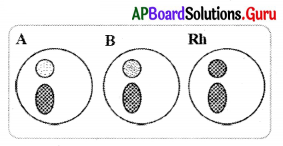
C) Arrangement for diffusion
D) Identification of blood group
Answer:
D) Identification of blood group
| Content of blood | Lower and upper limits |
| WBC | 5.0 – 10.0 × 103 cells / ul |
| RBC | 3.5 – 5.5 × 106 cells/ ul |
| HgB | Men 12- 16 g/dL; Women 9.9 – 13 g/dL |
| PLT (Platelet count) | 1.0 – 3.0 × 105 cells/ ul |
| Neutrophil | 40 – 75% |
| Lymphocytes | 20 – 45% |
| Eosinophil | 1 – 6% |
| Basophil | 0 – 1% |
| Monocyte | 0 – 3% |
![]()
Question 73.
Which of the following are high in blood ?
A) Monocytes
B) Basophils
C) Eosinophils
D) Lymphocytes
Answer:
D) Lymphocytes
Question 74.
Which of the following are less in blood ?
A) Neutrophils
B) Monocytes
C) Basophils
D) Eosinophils
Answer:
A) Neutrophils
Question 75.
Name the epithelium present in the figure.
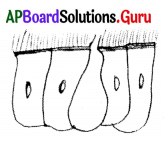
A) Cuboidal
B) Squamous
C) Columnar
D) Ciliated
Answer:
D) Ciliated
Question 76.
Name the tissue present in the diagram.
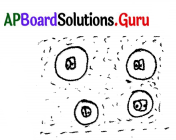
A) Bone
B) Areolar Tissue
C) Adipose Tissue
D) Cartilage Tissue
Answer:
B) Areolar Tissue
Question 77.
Name the labelled part of the figure.
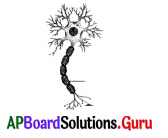
A) Axon
B) Dendrite
C) Myelin sheath
D) Nissal granules
Answer:
B) Dendrite
Question 78.
Identify the muscle tissue in the given figure.
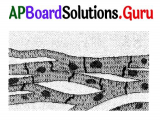
A) Striated muscles
B) Non-striated
C) Cardiac muscles
D) None
Answer:
C) Cardiac muscles
Question 79.
Which of the following is not an ill effect of haemoglobin ?
A) Anaemia
B) Heart problems
C) Blood clotting
D) Hotness of breath
Answer:
C) Blood clotting
![]()
Question 80.
Choose the correct matching from the following.
List – A
1) Smooth muscles
2) Skeletal muscles
3) Cardiac muscles
List – B
a) Heart
b) Legs and hands
c) Blood vessels
A) 1 – b, 2 – c, 3 – a
B) 1 – c, 2 – a, 3 – b
C) 1 – a, 2 – b, 3 – c
D) 1 – c, 2 – b, 3 – a
Answer:
C) 1 – a, 2 – b, 3 – c
II. Match the following.
1.
| Group – A | Group – B |
| 1) Epithelial tissue | A) Receive and conduct impulses |
| 2) Connective tissue | B) Stores fat |
| 3) Blood tissue | C) Framework and supports various organs in the body |
| 4) Nervous tissue | D) Protection |
| 5) Adipose tissue | E) Transport of |
| F) Absorption and secretion | |
| G) Digestion |
Answer:
1) Epithelial tissue – D) Protection
2) Connective tissue – C) Framework and supports various organs in the body
3) Blood tissue – E) Transport of materials
4) Nervous tissue – A) Receive and conduct impulses
5) Adipose tissue – B) Stores fat
2.
| Group – A | Group – B |
| 1) Bone | A) Joins different tissues |
| 2) Ligament | B) Found in trachea |
| 3) Tendon | C) Connects bones at joints |
| 4) Cartilage | D) Joins muscle to the bone |
| 5) Areolar tissue | E) Major component skeletal system |
| F) Transports material | |
| G) Living of blood vessel |
Answer:
1) Bone – E) Major component skeletal system
2) Ligament – C) Connects bones at joints
3) Tendon – D) Joins muscle to the bone
4) Cartilage – B) Found in trachea
5) Areolar tissue – A) Joins different tissues
3.
| Group – A | Group – B |
| 1) Cell body | A) Bone |
| 2) Fat storing tissue | B) Areolar tissue |
| 3) Osteoblasts | C) Cyton |
| 4) Fibroblasts | D) Shark |
| 5) Cartilage | E) Adipose |
Answer:
1) Cell body – C) Cyton
2) Fat storing tissue – E) Adipose
3) Osteoblasts – A) Bone
4) Fibroblasts – B) Areolar tissue
5) Cartilage – D) Shark
4.
| Group – A | Group – B |
| 1) Erythrocytes | A) WBC |
| 2) Leucocytes | B) Platelets |
| 3) Scavengers | C) Lymphocytes |
| 4) Microscopic policemen | D) RBC |
| 5) Blood clotting | E) Monocytes |
Answer:
1) Erythrocytes – D) RBC
2) Leucocytes – A) WBC
3) Scavengers – E) Monocytes
4) Microscopic policemen – C) Lymphocytes
5) Blood clotting – B) Platelets
5.
| Group – A | Group – B |
| 1) ‘O’ group | A) Universal recipients |
| 2) AB’ group | B) Axon |
| 3) Myeline sheath | C) Eosinophils |
| 4) Land Steiner | D) Universal donors |
| 5) Granulocytes | E) Blood groups |
Answer:
1) ‘O’ group – D) Universal donors
2) AB’ group – A) Universal recipients
3) Myeline sheath – B) Axon
4) Land Steiner – E) Blood groups
5) Granulocytes – C) Eosinophils
![]()
III. Identify the diagrams and name them.
1.
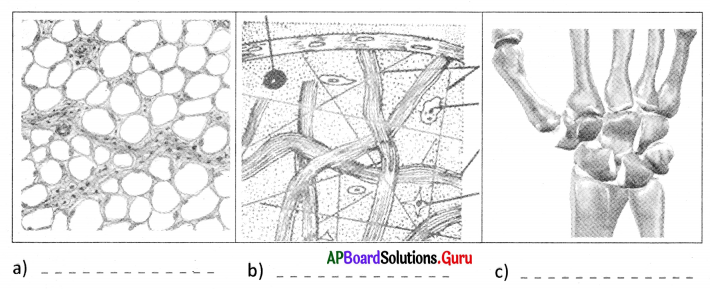
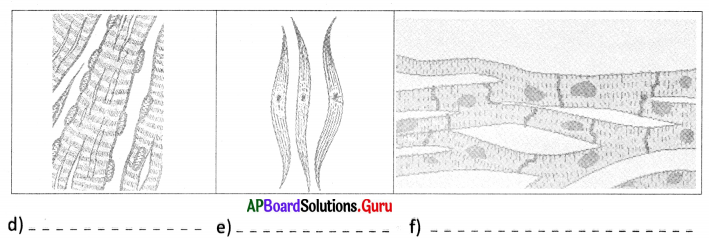
Answer:
a) Adipose tissue
b) Areolar tissue
c) Cartilage
d) Striated muscles
e) Non-striated musices
f) Cardiac muscles
2. Identify the diagram and label it.
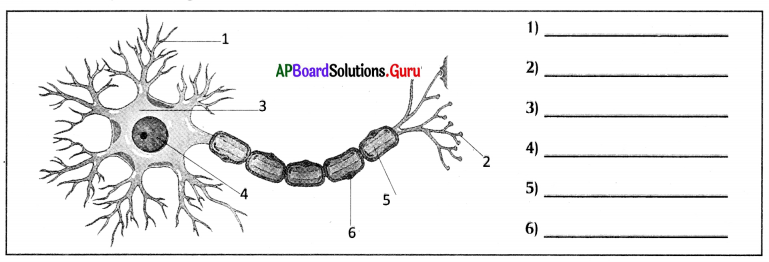
Answer:
Nerve cell –
1) Dendrite
2) Nerve terminals,
3) Soma (Cell body),
4) Nucleus,
5) Axon,
6) MyelIn sheath.
Question 81.
Identify the cells which play the role of microscopic police men & scavengers.
A) RBCs & platelets
B) Lymphocytes & Monocytes
C) Neutrophils & Basophils
D) Eosinophils & Nerve cells
Answer:
C) Neutrophils & Basophils
Question 82.
The following process is due to a voluntary contraction and relaxation of muscles
A) Heart muscles pumping blood
B) Movement of legs during cycling
C) Respiration in bronchi of the lungs
D) Movement of food in alimentary canal
Answer:
B) Movement of legs during cycling
Question 83.
Tissue that connects muscle to bone is ……………….
A) Ligament
B) Tendon
C) Cartilage
D) Epithelium
Answer:
B) Tendon
Question 84.
Ligament is made up of large number of fibres. These fibres are made up of ……………..
A) Minerals
B) Carbohydrates
C) Collagen
D) Fatty layers
Answer:
C) Collagen
Question 85.
People with …………….. are universal blood recipients.
A) Blood group ‘A’
B) Blood group ‘B’
C) Blood group ‘O’
D) Blood group ‘AB’
Answer:
D) Blood group ‘AB’
![]()
Question 86.
Which blood cells are known as Natural Scavengers ?
A) Eosinophils
B) Basophils
C) Monocytes
D) Lymphocytes
Answer:
C) Monocytes
Question 87.
Alternate dark and light bands are seen in which type of muscle tissue?
A) Striated muscle, Cardiac muscle
B) Unstriated muscle, Cardiac muscle
C) Striated muscle, Smooth muscle
D) Striated muscle, Unstriated muscle, Cardiac muscle.
Answer:
A) Striated muscle, Cardiac muscle
Question 88.
I) Prakash blood didn’t show clumping with anti-A antibodies.
II) Hasith’s blood clumped with only anti-A antibodies.
III) Both their blood samples clumped with anti-Rh serum.
Which of the following can be definitely said about blood groups of Hasith and Prakash ?
A) Both are Rh positive
B) Both are A positive
C) Both are Rh negative
D) Prakash is B positive and Hasith is A positive
Answer:
D) Prakash is B positive and Hasith is A positive
Question 89.
Squamous epithelium is found in
A) Lining of mouth
B) Oesophagus
C) Both A and B
D) None of these
Answer:
C) Both A and B
Question 90.
Find the correct statement among the following.
A) Neutrophils are one type of agranulocyte.
B) Basophils attack and destroy only virus.
C) Pus is nothing but decayed WBC.
D) WBC contain haemoglobin.
Answer:
C) Pus is nothing but decayed WBC.
Question 91.
Mohammed learnt about blood in his classroom, having learnt the topic
A) He will take balanced diet and avoid bad habits
B) He will take iron rich food only and will do yoga everyday
C) He will take balanced diet, do yoga and exercise
D) Will take care of his health and promote blood donation
Answer:
D) Will take care of his health and promote blood donation
Question 92.
Rahul’s blood group is AB + he lost lot of blood in an accident. He needs blood transfusion. The blood group suitable to him is ………………..
A) A+
B) B+
C) AB+
D) All the above
Answer:
D) All the above
![]()
Question 93.
What happens if the platelets are absent in the blood ?
A) Oxygen is not transported
B) CO2 is not transported
C) Blood does not clot
D) Microorganism enter into the body
Answer:
C) Blood does not clot
Question 94.
Which of the following blood group is “universal recipient” ?
A) Blood group – A
B) Blood group – AB
C) Blood group – O
D) Blood group – B
Answer:
B) Blood group – AB
Question 95.
Which of the following statements is not true about the given figure ?

A) P helps nerve impulse, Q helps protein synthesis
B) P and Q have a nucleus
C) P and Q are cell organelles
D) P is nerve cell, Q is plant cell
Answer:
B) P and Q have a nucleus (or) C) P and Q are cell organelles
Question 96.
Which labelled cell is found in the Muscular system ?
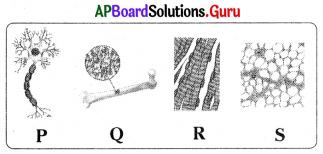
A) only S
B) only P
C) only R
D) only Q
Answer:
C) only R
Question 97.
Red blood cells: Erythrocytes:: White blood cells: ?
A) Leucocytes
B) Monocytes
C) Thrombocytes
D) Erythrocytes
Answer:
A) Leucocytes
Question 98.
Identify the neuron with axon and more dendrites.
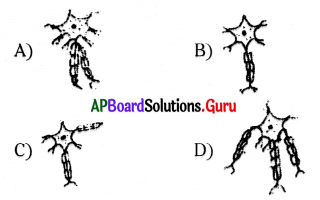
Answer:
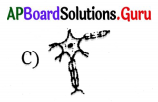
Question 99.
Which of the following cellular components of the blood is responsible for the production of antibodies ?
A) Erythrocytes
B) Thrombocytes
C) Lymphocytes
D) Monocytes
Answer:
C) Lymphocytes
![]()
Question 100.
If connective tissue is damaged in our body, what would be the consequences
a) Tissues binding capacity decreases
b) Tissues supporting capacity will dis-appear
c) Tissues rigidity increases
d) The body defence, body repair in-creases
e) The transport material from one tis-sue to another increases.
A) a, c, e only
B) a, b, c only
C) b, c, d only
D) c, d, e only
Answer:
B) a, b, c only
Question 101.
Let us observe following information. Identify correct matching.
List – I
1) Lung alveoli
2) Lining of organs
3) Gland
4) Secretions
List – II
a) Squamous epithelium
b) Cuboidal epithelium
c) Columnar epithelium
d) Glandular epithelium
A) 1 – d, 2 – c, 3 – b, 4 – a
B) 1 – a, 2 – b, 3 – c, 4 – d
C) 1 – a, 2 – b, 3 – d, 4 – c
D) 1 – b, 2 – a, 3 – d, 4 – c
Answer:
C) 1 – a, 2 – b, 3 – d, 4 – c
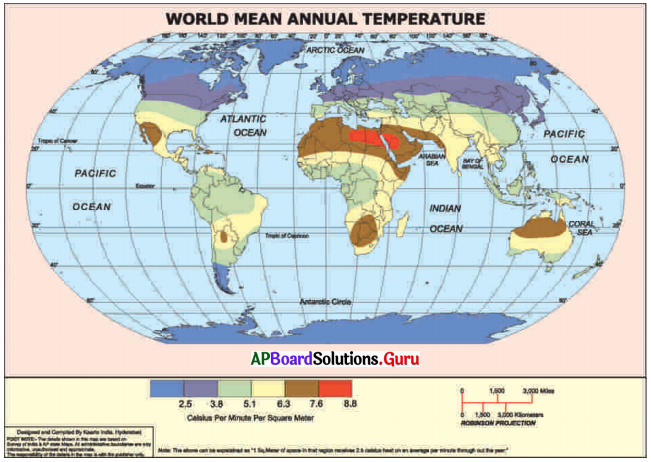
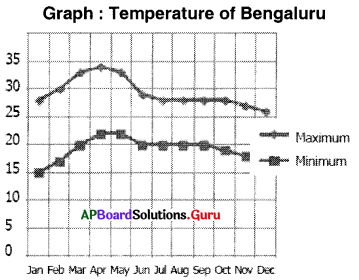
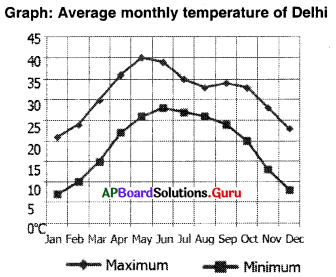
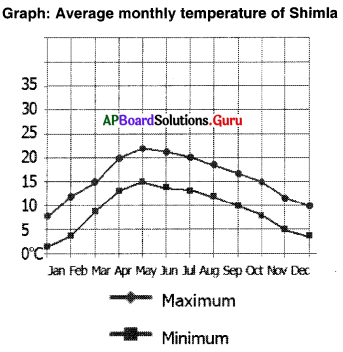
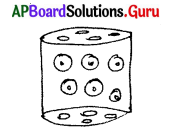
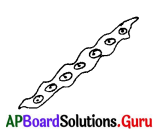


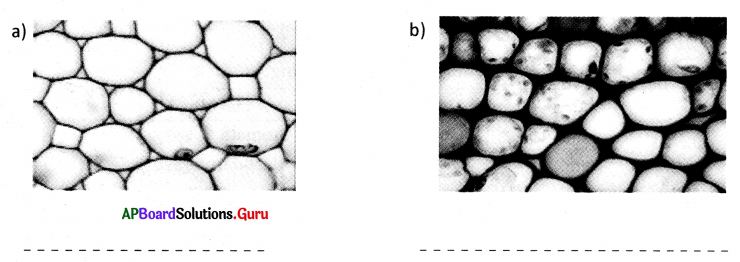
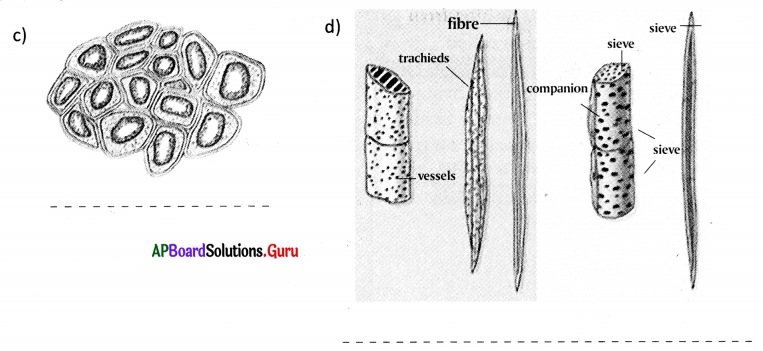
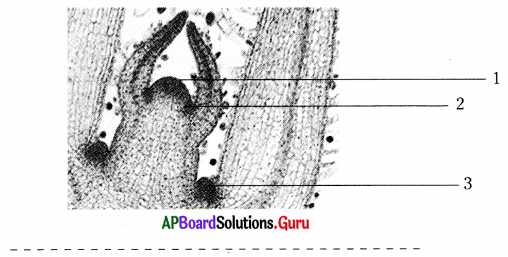
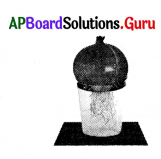

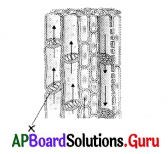

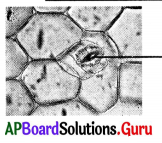

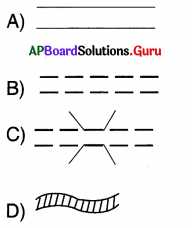
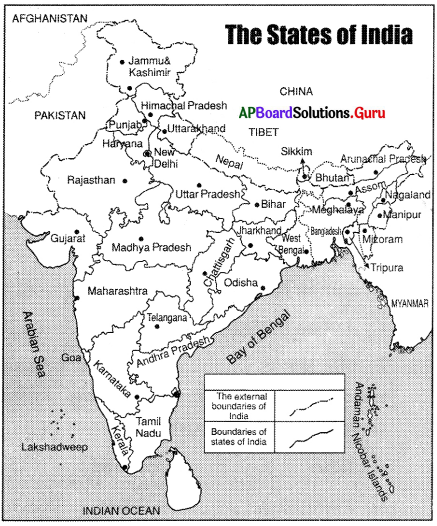
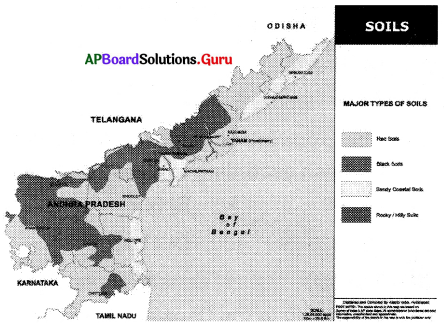
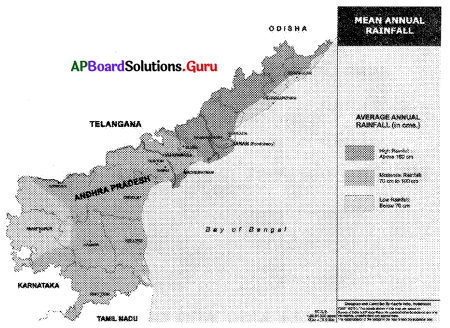
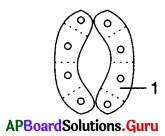
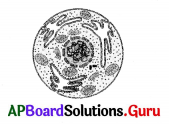
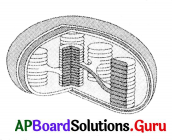
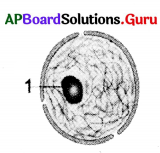
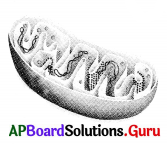
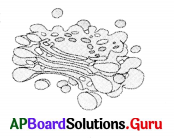

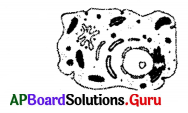
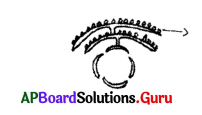 This Part is ………………
This Part is ………………